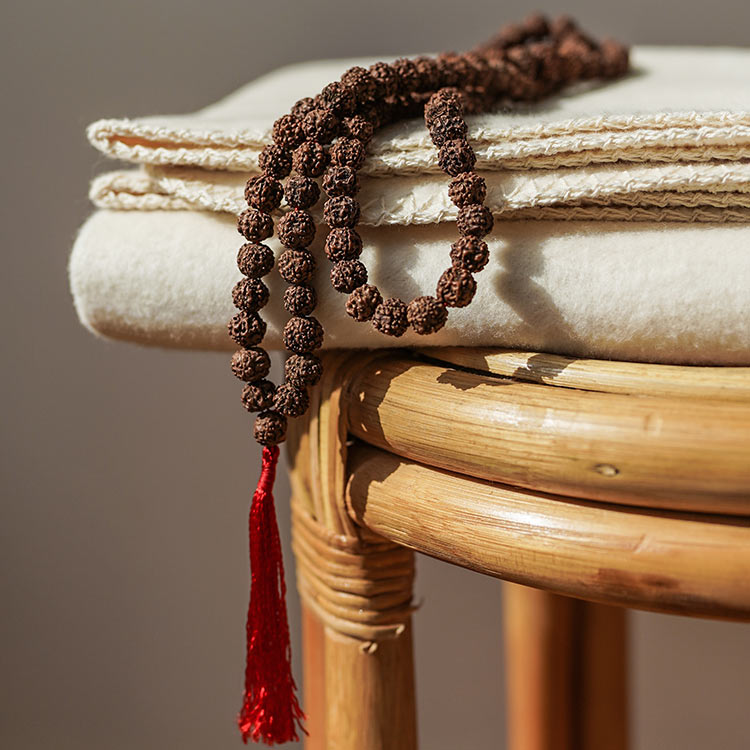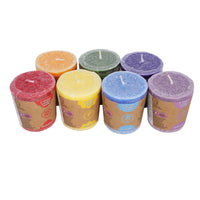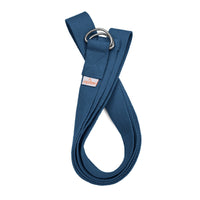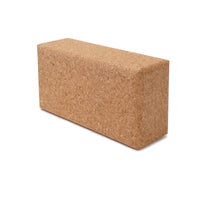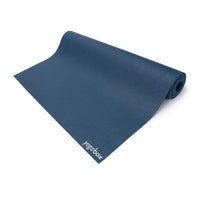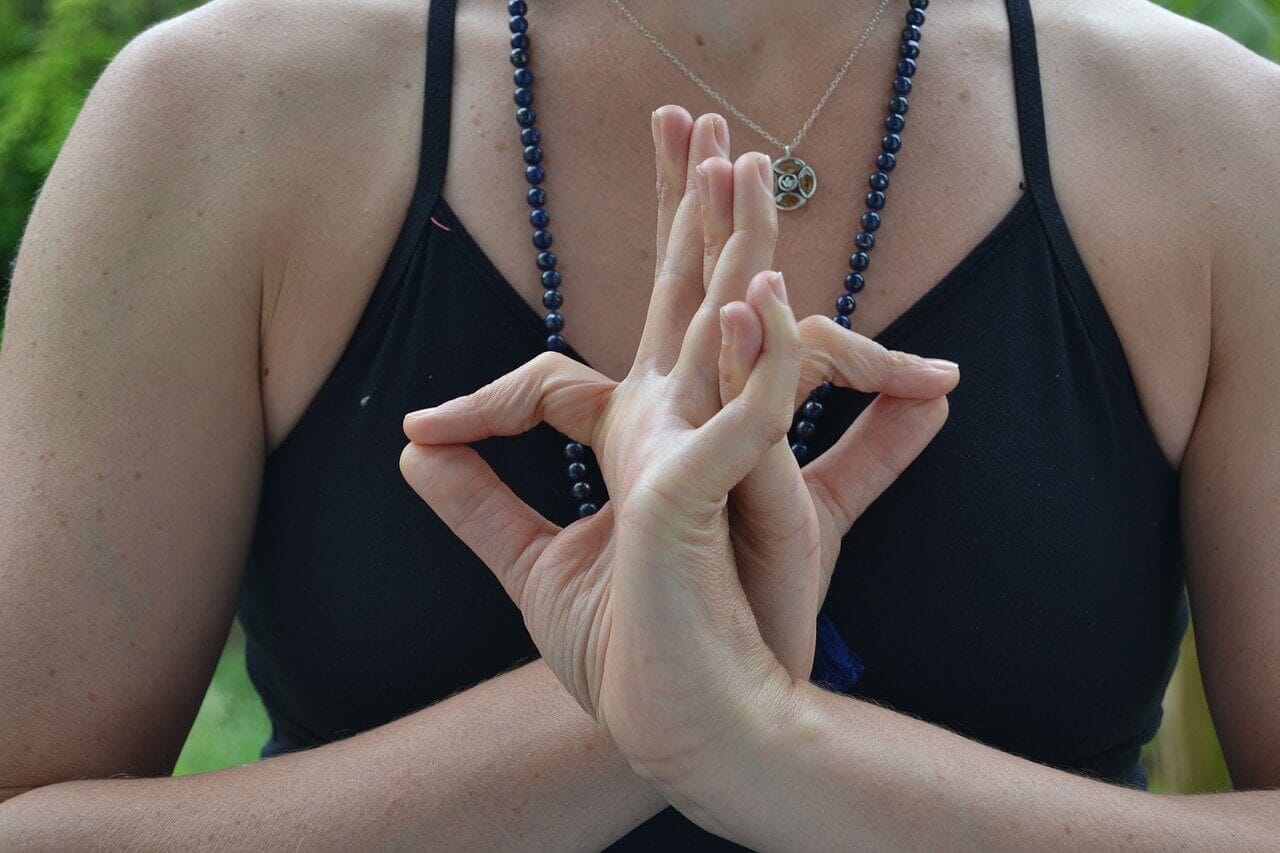
Mudra

Mudra, also known as finger yoga, is one of the most central yoga exercises. The special gestures performed with the hands and fingers symbolize the complete connection of body and mind in a very special way. During this merging of both elements, all things we no longer need are let go, in harmony with the entire cosmos. Afterwards, the mind is refreshed and, with full concentration, ready to absorb entirely new energies and impressions. Deep relaxation spreads throughout the entire body. In this asana, you learn not only to completely let go of the body—but above all, also on a mental level.
In this article, you will learn what Yoga Mudra is and what effect you can achieve with these powerful exercises with your hands and fingers during your meditation.
Discover your inner self with Yoga Mudra
Whether Kundalini Yoga or Hatha Yoga, yoga is often associated with a major misunderstanding. This millennia-old practice is supposedly a lifestyle or sporting activity that only serves to make you look particularly good and fit. But ultimately, only those who also feel good inside can radiate this strength outwardly.
However, many yoga practitioners in the Western hemisphere often forget that the asanas, some of which are physically very demanding, are actually intended only to provide a balancing effect and inner peace—so that the necessary strength can be developed for the courageous path to one's own inner sources of power. It's not surprising, then, that meditation has been considered the highest level of yoga for millennia.
Therefore, mudra is the best possible asana for deep meditation, allowing you to get closer to your own subtle self. Unlike in Western countries, mudras are very widespread in India. These gestures direct and activate energies. The chakras are also addressed by the exercises. You've probably seen images of yogis performing well-known mudras. They are formed with the hands and fingers.
What does mudra mean?
Translated into Sanskrit, the word 'mudra' means something like 'the movement of the hand,' 'the gesture of the hand,' or 'the hand position.' Therefore, mudra is also considered the 'seal of yoga' or 'symbol of yoga.'
Yoga Mudra Effect on Your Body and Mind
Madras have a powerful effect. With these special exercises, you can mobilize your hips and spine very effectively. Furthermore, the deep forward bend achieved through Yoga Mudra is also one of the best anti-aging poses in yoga. It not only strengthens flexibility but also connects physical energy with the subtle forces of the mind and the universe in a very special way. For thousands of years, yoga has been a physical way to connect with the all-encompassing powers of all beings. And with Mudra, the physical and mental levels are connected in such a way that the physical practice enormously strengthens the power of the mind.
The instructions for mudras
We'll introduce you to a few mudras that will help you bring your body and mind into harmonious alignment. In general, mudras with downward-facing palms have a more grounding effect. Mudras with upward-facing palms, on the other hand, represent inspiration, which is meant to be received from a higher power.
The starting position
Sit in the center of your yoga mat . Those who have mastered the full lotus position should assume this position. However, the full lotus position is often a bit difficult for yoga beginners. And in later life, this position is often no longer easy to perform due to age – even for those who have practiced yoga for years or even decades. Therefore, it is perfectly fine to use yoga accessories , such as a meditation cushion , or to adopt a different sitting position for the yoga mudra. Good alternatives with a similar effect are the half lotus position, the cross-legged seat, or the heel seat.
Chin Mudra and Jnana Mudra
This mudra is one of the most well-known. Many photos show yogis in the lotus position, immersed in deep meditation with Chin or Jnana Mudra, allowing the practice to sink in. Place your hands on your knees. Now bring your index finger and thumb together. Spread your thumb, ring finger, and little finger apart. If your palms face down, you are practicing Jnana Mudra. If they face up, you are practicing Chin Mudra.
Vishnu Mudra
This exercise may sound familiar. It's part of the balancing alternate nostril breathing technique used in Pranayama. Curl your index and middle fingers of your right hand toward your palm. Spread your little finger, thumb, and ring finger apart. Now gently place your ring finger and thumb on either side of your nostrils. Begin the first alternate nostril breathing cycle by inhaling through your left nostril and closing the right nostril with your thumb. Now open your right nostril, simultaneously closing your left, and exhale slowly, thus completing the cycle. Learn more about Vishnu Mudra here.
Anjali Mudra
This exercise is part of every yoga class. It's always performed when greeting and saying goodbye. It also opens and closes the asana during the morning salutation. To do it, hold your hands in prayer position in front of the heart chakra. The meaning changes depending on whether it's performed in front of the heart chakra or the sahasrara chakra:
- Hands in front of the face: expression of great respect
- Hands above the crown of the head (Sahasrara Chakra): Greeting of a higher power
Learn more about the famous exercise here .
For advanced practitioners: Mudra in combination with Utthita Parsvakonasana
Those with more yoga practice can also combine Utthita Parsvakonasana – the Side Angle Pose and the Revolved Side Angle Pose (Parivritta Parsvakonasana) – with Yoga Mudrana. To do this, simply press your back heel into the yoga mat and then position your left hand on the inside of your right foot. Ideally, your hand should now be directly under your left shoulder. Finally, simply stretch your right arm up toward the ceiling and pull it lengthwise over your head.
Share



